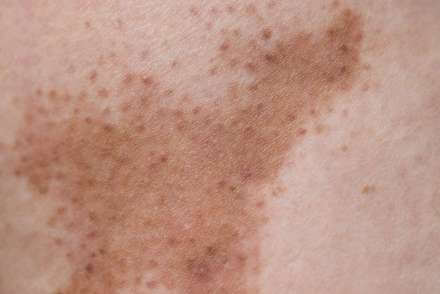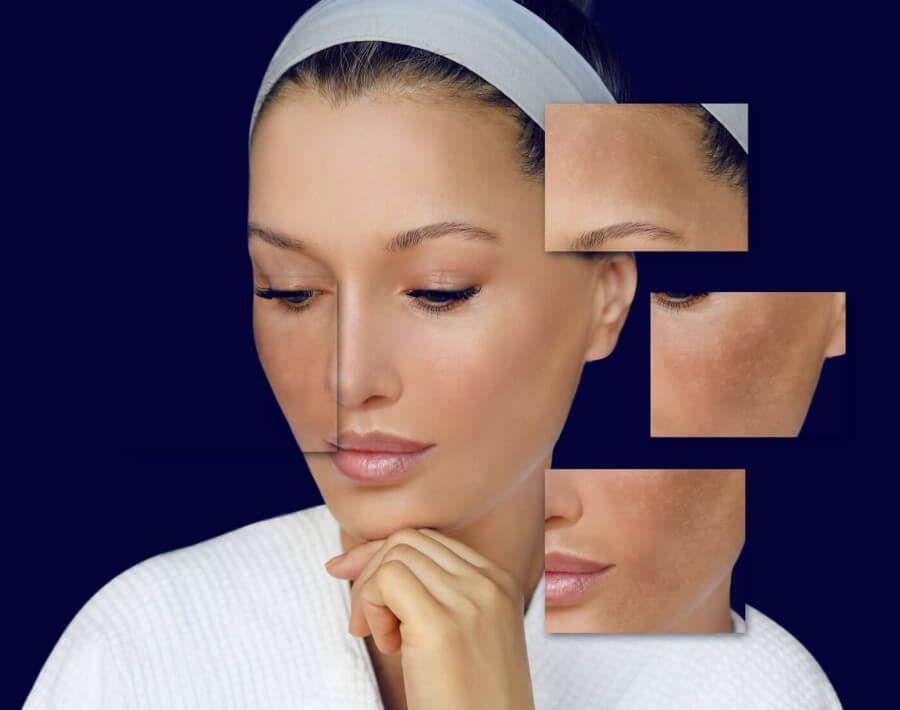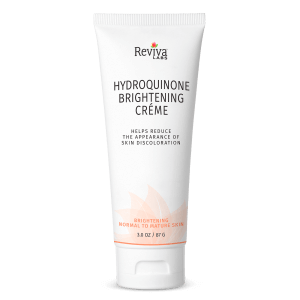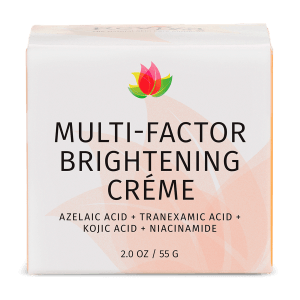Clean Beauty, Ingredients, Reviva Labs, Skin Care
Why the recent hype about hyper-pigmentation?
Hyper-pigmentation isn’t a new concern, but it does seem to appear at the top of “must read” lists and it’s featured in skin care articles more frequently today. Maybe the increased concern has been caused by the growing focus on skin radiance in social media; or maybe it’s due to an increase in post-inflammation hyper-pigmentation (PIH) caused by “maskne” (due to wearing face coverings). Regardless the source, it’s certainly attracting a lot of attention lately.
For example, in Skin Inc in part 2 of a multi-part series “What’s All The Hype? Part 2: The Fix Is In” by Rebekah Star – the various “resurfacing” options are discussed. That is, peels, laser resurfacing, and at-home treatment protocols. In the first article in the series (from the September issue) Rebekah delves into the causes.
What typically causes hyperpigmentation?
Hyper- (def: over, beyond, etc.) essentially means the overproduction of the skin’s normal pigmentation. Most skin care enthusiasts know that melanin is a pigment that gives skin its color. And some will know it’s produced by skin cells called melanocytes. But just like any cell in your body, sometimes these melanin factories can go into overdrive. What triggers this overproduction varies – but it’s usually trauma of some type. The end result is darkening of the skin in very localized “spots” or a overall uneven tone or patchiness – where the skin appears darker in areas.
Ultraviolet (UV) damage from the sun
The number one source of hyperpigmentation is the sun – and the damage UV rays cause in the skin. The natural, subtle “tanning” reaction is your skin reacting normally to the sun – to protect itself. However, excessive sun exposure or prolonged exposure (with or without a burn) can trigger the melancoytes to go haywire. This overproduction of melanin materializes as sun spots, or dark patches, that just don’t fade over time – like your summer tan does. And of course, as we age, the effects of sun and simply aging inevitably leads to “age spots” appearing.
Obviously, avoiding the sun and/or the liberal use of sunscreens is your best defense. However, it’s nearly impossible for most people to avoid developing some type of dark spots. To some extent, this is normal, but it still doesn’t make it desirable to everyone.

Melasma & related hormonal causes
Pregnancy is another common cause for uneven skin tone. The abundance of hormones surging wreak havoc on melanin production. Melasma (or Mother’s mask) is a typical “side effect” for many woman. The skin along the cheeks, chin, and even the forehead can darken – forming a “mask” of hyper-pigmentation. Usually, after delivery, this darkened skin will fade, but not always, and often not completely. Other hormonal conditions or illnesses can also trigger similar issues (e.g., Addison’s Disease, etc.). And some medications can trigger hyper-pigmentation too.
PIH (Post-Inflammatory Hyper-Pigmentation)
Skin trauma is one of the major causes of hyperpigmentation, especially among those with naturally darker skin tones. Though skin issues can cause PIH in anyone. Acne scarring and the dark spots associated with it is a big culprit. Often popping, picking, or even simply severe acne can result in PIH. The skin simply overcompensates and darkens the spot during healing. It’s a combination of scarring and over production of melanin. So, yes in addition to the scarring and dimpling in the skin acne can leave behind, some also need to contend with hyperpigmentation.
But acne doesn’t only occur on the face. It can occur anywhere on the body. And many struggle with back acne, or acne on the arms, chest, etc. So, the effects of PIH can appear anywhere. And the skin trauma need not be caused by acne or blemishes. Cuts, bruises, burns, or other skin trauma can also lead to PIH appearing.
How do you treat hyper-pigmentation?
There are many different methods and solutions for treating hyper-pigmentation. Topical treatments are a good place to start and involve lightening and brightening uneven skin tone and dark spots. Serums, creams, and lotions (for the body) will likely feature well known and time-tested brightening ingredients.
One proven, but controversial, ingredient is hydroquinone. This melanin inhibitor is considered an OTC drug in the United States with up to a 2% concentration. Any higher percentage requires a prescription. Around the globe, hydroquinone is generally only available by prescription. It is effective and does lighten skin, but many don’t want to use this particular ingredient – or depending on where they live, simply can’t.
Generally topical treatments will take longer to exhibit results. And when using topical brighteners you should apply sun screen to avoid eliminating any lightening progress
The good news is there are many other excellent topical brightening ingredients. Kojic acid, niacinamide (Vitamin B-3), Arbutin, Vitamin C, Resveratrol, Bearberry, and Licorice Root are all great choices. These ingredients are more accepted, and each works differently to help brighten skin or to reduce dark spots. Often, you’ll use them in combination in a single formula or by layering multiple products.
Of course, to improve the effectiveness of a brightener, it’s often a good idea to involve an acid to help slough away dead skin. Azelaic acid, glycolic acid, tranexamic acid, lactic acid, and salicylic acid are some of the most common. Again, each has pros and cons but “chemically exfoliating” the skin is an excellent way to brighten the skin while also helping skin to accept other ingredients or products. And of course, retinols are also beneficial in help to brighten the complexion.
Generally topical treatments will take longer to exhibit results. And when using topical brighteners you should apply sun screen to avoid eliminating any lightening progress – since most brightening ingredients also sensitize you to the sun. Depending on the severity of your uneven skin tone, dark spots, etc. it’s important to give products time to work – it could take several weeks. Even hydroquinone can take weeks to affect the skin and it’s an OTC product. Continual use will show improvement gradually over that period with regular, daily applications.
More drastic brightening methods generally require visits to med-spas or dermatologists
Chemical peels will not only help resurface the skin but also brighten the complexion. However, true chemical peels should only be done by trained professionals – since all involve higher concentrations of acids that generally don’t self-neutralize. Which means they can severely burn or even permanently damage your skin. And even when done properly you should expect your skin to peel dramatically (as intended). Peels are not for the faint of heart – and will require healing time.
Laser resurfacing is another option, but again you’ll need to seek out a professional. And lasers can cause burns and skin damage (if used improperly); it will also require healing between sessions. Your skin will be red and can swell while it also generally flakes or peels away. Both ablative and non-ablative laser treatments can be expensive – especially since they require multiple sessions.
You’ll want to work with a skin professional or dermatologist and do some research before diving into aggressive chemical peels or laser resurfacing. Seeking out guidance from a professional is always beneficial and can help you better understand what caused your skin discolorations.
We generally suggest starting with topicals
Reviva is well-known for the effectiveness of our brightening skin care collection. In fact, Reviva has been known and recognized for our brightening products for several decades. You’ll find a plethora of proven ingredients chosen for their ability to brighten complexions, reduce discolorations, and lessen the appearance of dark spots, while evening skin tones.












